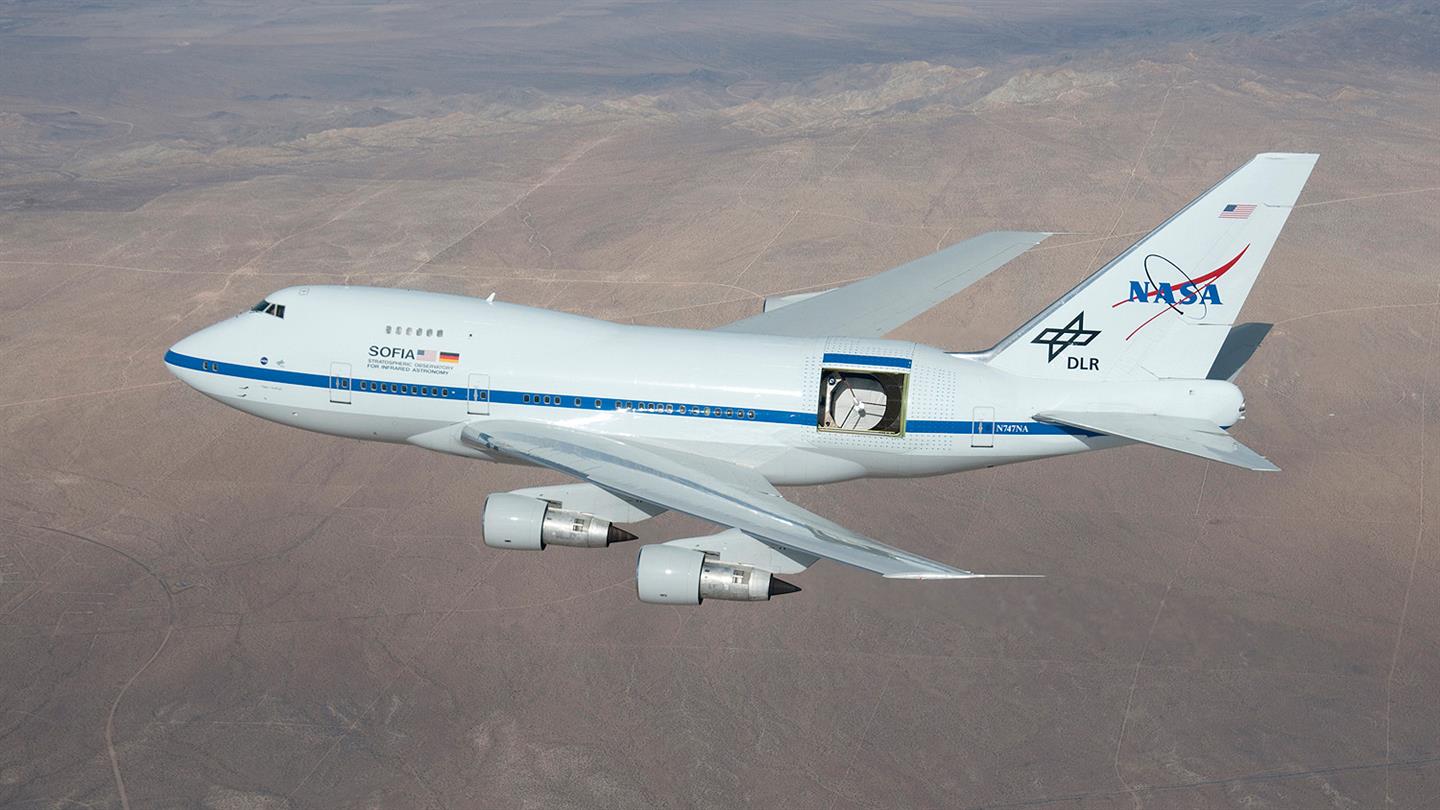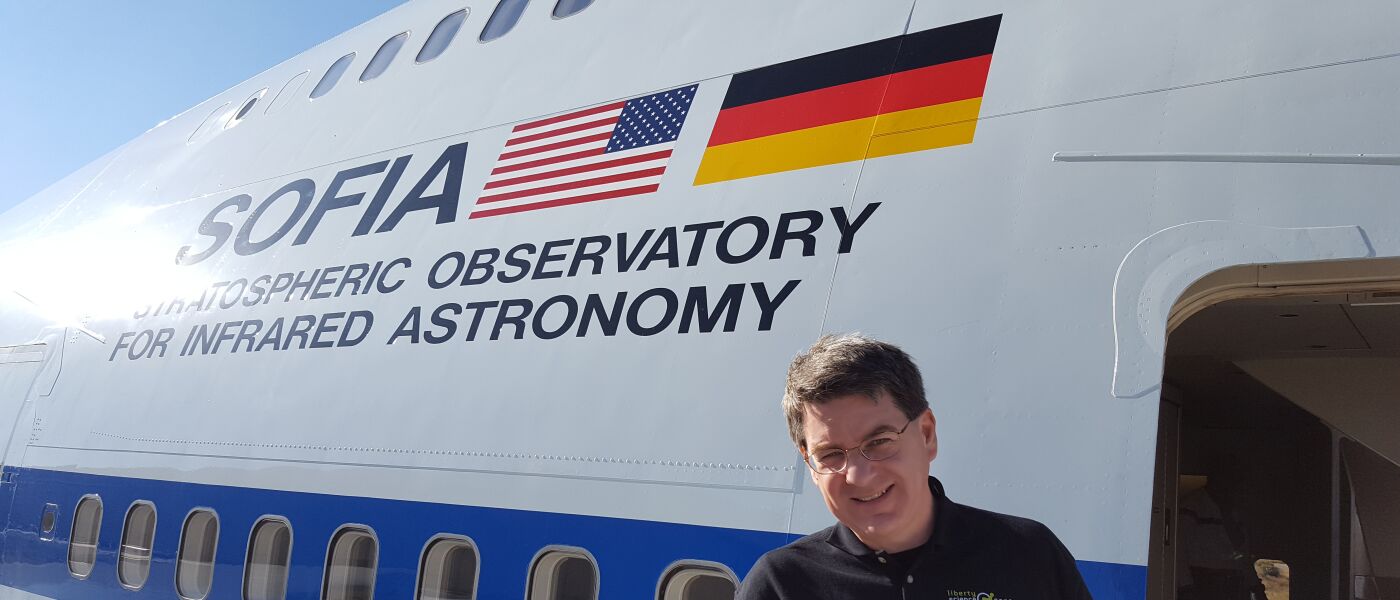Behind-the-STEM: How NASA SOFIA helps us understand the universe
Writer: Patrick McQuillan
Position: Vice President of STEM Education
Working at Liberty Science Center, I get to do pretty cool things every day. But one experience was particularly memorable. Earlier this year, I had the opportunity to fly on NASA's SOFIA Observatory.
You may have heard about SOFIA in the news recently. That's because on Oct. 5, 2017, a team of researchers will fly SOFIA into the shadow of Neptune's moon Triton as it passes in front of a distant star. By flying SOFIA into the shadow, the researchers will be able to directly study Triton's atmosphere for the first time in 15 years.
Earlier this year, when I had the chance to fly on SOFIA, I joined a team of researchers collecting data from several gas clouds in the galaxy to determine the abundances and kind of molecules in the clouds. This information will be used to help refine models of how these clouds collapse under the force of gravity to create new stars.
Needless to say, NASA's SOFIA is helping us learn about a lot of different things, from moons to gas clouds to so much more. But what exactly is SOFIA and how does NASA use it?

SOFIA, the Stratospheric Observatory For Infrared Astronomy, is a modified Boeing 747 aircraft with a 2.5 meter (100 inch) infrared telescope mounted in the rear portion of the airplane. SOFIA is the largest airborne observatory in the world and is capable of making observations that are impossible for even the largest and highest altitude ground-based telescopes.
SOFIA’s telescope is optimized for observing in the infrared band of the electromagnetic spectrum. What does that mean, exactly? First, it's important to understand what infrared light is: it's the heat that warm objects emit, and in fact, many objects in space emit almost all of their energy at infrared wavelengths.
Even if the infrared light from astronomical objects reaches the Earth, water vapor in the atmosphere blocks it, making it impossible for ground-based telescopes to observe in the infrared band. This is not a problem for SOFIA. Flying in the stratosphere, SOFIA rises above more than 95% of the atmospheric water vapor. Since the telescope is in an airplane and not on a satellite orbiting Earth, SOFIA’s scientific instruments can be changed/upgraded between flights (something that is not possible on an astronomical satellite).
This allows SOFIA to observe a wide variety of astronomical objects that are of great interest in our attempt to understand the Universe. These include: star birth and death, the formation of new solar systems, identification of complex molecules in space, nebulae and dust in galaxies, and black holes at the center of galaxies.
To maximize the time SOFIA can collect data, a typical mission is quite long. Most SOFIA missions take off at sunset, fly all night, and land at sunrise. SOFIA cannot operate during the day due to the brightness of the Sun. So, yes, the operators of SOFIA’s telescope and science instruments (as well as the pilots) must stay up all night long.
Best of luck to the SOFIA crew this Thursday! Be sure to follow Liberty Science Center's social pages on Facebook, Twitter and Instagram for updates on NASA SOFIA's journey into the shadow of Triton, as well as by following hashtag #NeptunesMoon.
